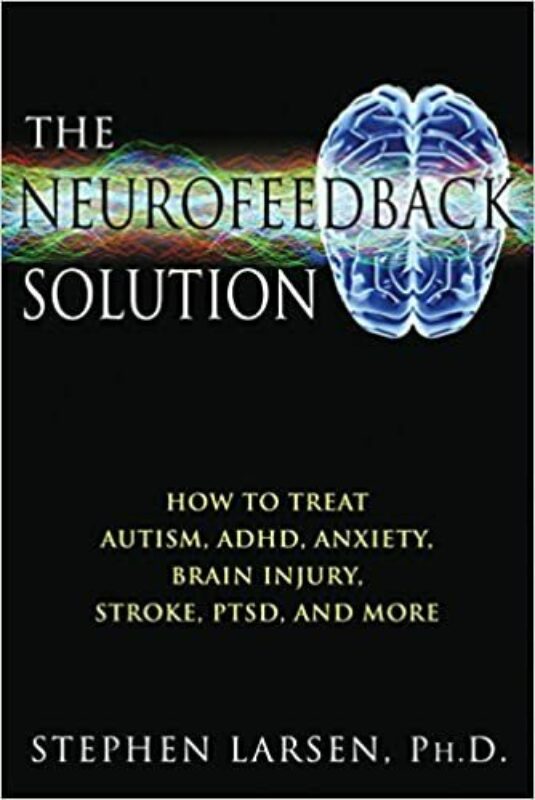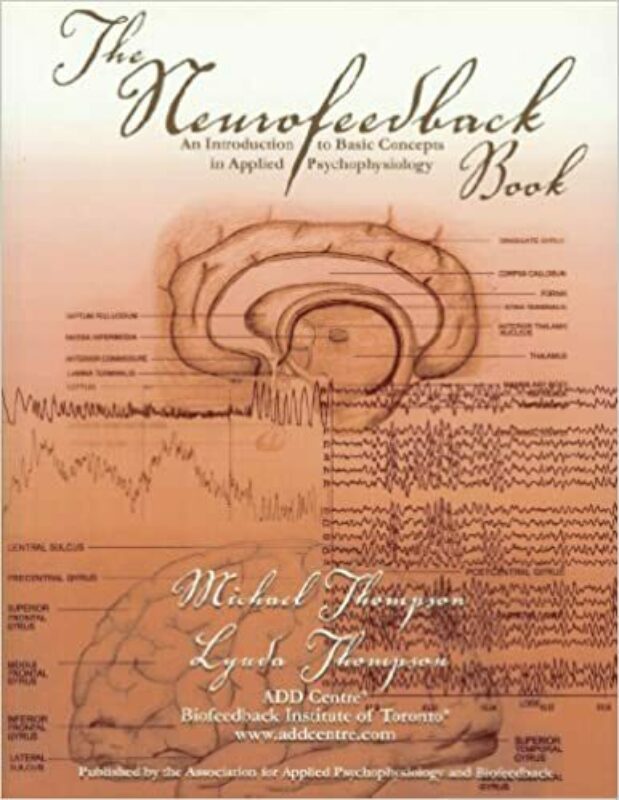JIM ROBBINS
A Symphony in the Brain
SEBERN E. FISHER
Neurofeedback in the Treatment of Developmental Trauma
Neurofeedback, a type of “brain training” that allows us to see and change the patterns of our brain, has existed for over 40 years with applications as wide-ranging as the treatment of epilepsy, migraines, and chronic pain to performance enhancement in sports.
Today, leading brain researchers and clinicians, interested in what the brain can tell us about mental health and well being, are also taking notice. Indeed, the brain’s circuitry―its very frequencies and rhythmic oscillations―reveals much about its role in our emotional stability and resilience. Neurofeedback allows clinicians to guide their, clients as they learn to transform brain-wave patterns, providing a new window into how we view and treat mental illness.
In this cutting-edge book, experienced clinician Sebern Fisher keenly demonstrates neurofeedback’s profound ability to help treat one of the most intractable mental health concerns of our time: severe childhood abuse, neglect, or abandonment, otherwise known as developmental trauma.
MARK STEINBERG PHD., SIEGFRIED OTHMER PH.D., & ROBERT D.
ADD: The 20 Hour Solution
ADD: The 20-Hour Solution explains how EEG biofeedback (neurofeedback) addresses the underlying problem and characteristics of ADD and ADHD, so that symptoms resolve and tangible improvement results. This book describes the method by which we can improve the brain’s ability to pay attention and regulate its behavior. It explains the self-healing capacities of the human brain and how it can learn or re-learn the self-regulatory mechanisms that are basic to its normal design and function. This book shows:.What ADD really is and how the brain maintains self-regulation.How and why EEG biofeedback (neurofeedback) helps people with ADD.What parents can do to get their child on-track to healthy adjustment and development.How to talk to doctors, therapists, teachers, and others about ADD.Good assessment procedures and how they contribute to effective treatment.How self-control, personal choice, and responsibility for one’s behavior relate to scientific principles of brain functioning.How to find appropriate resources and get started with neurotherapyThe book also lists specific up-to-date resources on where to find information on EEG neurofeedback and how to find providers throughout the world.
STEPHEN LARSEN
The Neurofeedback Solution
Surveying the work of neurofeedback pioneers, Larsen explains the techniques and advantages of different neurofeedback methods–from the LENS technique and HEG to Z-score training and Slow Cortical Potentials. He reveals evidence of neuroplasticity–the brain’s ability to grow new neurons—and shows how neurofeedback can nourish the aging brain and help treat degenerative conditions such as Alzheimer’s and strokes. Examining the different types of brain waves, he shows how to recognize our own dominant brainwave range and thus learn to exercise control over our mental states. He explains how to combine neurofeedback with breathwork, mindfulness, meditation, and attention-control exercises such as Open Focus. Sharing successful and almost miraculous case studies of neurofeedback patients from a broad range of backgrounds, including veterans and neglected children, this book shows how we can nurture our intimate relationship with the brain, improving emotional, cognitive, and creative flexibility as well as mental health.
MICHAEL & LYNDA THOMPSON
The Neurofeedback Book
Neurofeedback has been around a long time, since the 1960s when it was known as EEG biofeedback, and it has become one of the fastest growing segments of the mind-body medicine movement. The Neurofeedback Book is the first true textbook dedicated to this area of healthcare. It is written for peopl at all levels of knowledge in the field and is a must-have for those exploring alternative medicine modalities. This book is written to assist you in understanding the basis of neurofeedback and the fundamentals of how to do EEG biofeedback.
ROBERT W. HILL PHD & EDUARDO CASTRO MD
Getting Rid of Ritalin
After observing medical success using biofeedback training to treat epilepsy and other health/behavioural conditions, Doctors Castro and Hill began using neurofeedback (a sophisticated form of brainwave biofeedback) to treat patients diagnosed with Attention Deficit Disorder (ADD). The results were astonishing. Their book argues that the benefits of neurofeedback training far outweigh those of the symptom-attacking drugs such as ritalin that do not cure ADD.
MARK SCHWARTZ
Biofeedback: A Practitioners Guide
The definitive text in the field, this comprehensive volume provides state-of-the-science coverage of biofeedback research, applications, clinical procedures, and biomedical instrumentation. With contributions from leading experts, the volume offers a unique combination of practical know-how and scholarly expertise. A wealth of information is presented in an accessible, streamlined style, including helpful glossaries throughout. Featured are detailed protocols for helping patients cultivate lower physiological arousal and for addressing an array of specific clinical problems: headaches, temporomandibular disorders, Raynaud’s disease, essential hypertension, neuromuscular problems, elimination disorders, and much more.
WILLIAM SEARS MD & LYNDA THOMPSON PHD
The ADD Book
One of America’s most trusted pediatricians outlines an effective, drug-free approach to treating children with Attention Deficit Disorder. Your child with A.D.D. can flourish-without drug therapy. That’s the revolutionary and reassuring message that Dr. William Sears delivers in The A.D.D. Book. Dr. Sears, whose bestselling books, including The Baby Book and The Discipline Book, have established him as one of the country’s most reliable authorities on parenting, joins forces with child psychologist Lynda Thompson, Ph.D., to provide all the information that you as a parent need to help your child with A.D.D. thrive. In The A.D.D. Book you’ll learn what A.D.D. is and what it is not, how to tell whether your child has A.D.D., and how to increase your child’s learning ability both at home and at school. Dr. Sears and Dr. Thompson outline effective behavior modification strategies that reach beyond the widely prescribed drug therapy to improve your child’s cognitive abilities while reducing hyperactivity. Using real-life case studies and the results of the most recent scientific research, they offer guidelines for living with and helping your child with A.D.D.
MICHAEL THOMPSON MD & LYNDA THOMPSON PHD
Functional Neuroanatomy
Organized with reference to networks, lobes of the brain,10-20 sites and Brodmann areas, this 137-page monograph features over 100 plates/illustrations and comprises all new information as published in The Neurofeedback Book: 2nd Edition.
BESSEL VAN DER KOLK MD
The Body Keeps The Score
R. DOUGLAS FIELDS, PH.D
Electric Brain: How the New Science of Brainwaves Reads Minds, Tells Us How We Learn, and Helps Us Change for the Better
Analyzing brainwaves, the imperceptible waves of electricity surging across your scalp, has been possible for nearly a century. But only now are neuroscientists becoming aware of the wealth of information brainwaves hold about a person’s life, thoughts, and future health.
In Electric Brain, world-renowned neuroscientist and author R. Douglas Fields takes us on an enthralling journey into the world of brainwaves, detailing how new brain science could fundamentally change society, separating fact from hyperbole along the way.
R. DOUGLAS FIELDS, PH.D
The Other Brain: From Dementia to Schizophrenia, How New Discoveries about the Brain Are Revolutionizing Medicine and Science
Despite everything that has been written about the brain, a very important part of this vital organ has been overlooked in most books – until now. The Other Brain is the story of glia, which make up approximately 85% of the cells in the brain. Long neglected as little more than cerebral packing material (“glia” means glue), glia are sparking a revolution in brain science.
Glia are completely different from neurons, the brain cells that we are familiar with. Scientists are discovering that glia have their own communication network, which operates in parallel to the more familiar communication among neurons. Glia provide the electrical insulation for neurons, and glia even regulate the flow of information between neurons.
GYORGY BUZSAKI
Rhythms of the Brain
Studies of mechanisms in the brain that allow complicated things to happen in a coordinated fashion have produced some of the most spectacular discoveries in neuroscience. This book provides eloquent support for the idea that spontaneous neuron activity, far from being mere noise, is actually the source of our cognitive abilities. It takes a fresh look at the coevolution of structure and function in the mammalian brain, illustrating how self-emerged oscillatory timing is the brain’s fundamental organizer of neuronal information. The small-world-like connectivity of the cerebral cortex allows for global computation on multiple spatial and temporal scales. The perpetual interactions among the multiple network oscillators keep cortical systems in a highly sensitive “metastable” state and provide energy-efficient synchronizing mechanisms via weak links.
NORMAN DOIDGE
The Brain’s Way of Healing
The New York Times–bestselling author of The Brain That Changes Itself presents astounding advances in the treatment of brain injury and illness. Now in an updated and expanded paperback edition.
Winner of the 2015 Gold Nautilus Award in Science & Cosmology
DANIEL A. HUGHES
Building the Bonds of Attachment: Awakening Love in Deeply Traumatized Children
Building the Bonds of Attachment is the third edition of a critically acclaimed book for social workers, therapists, and parents who strive to assist children with reactive attachment disorder. This work is a composite case study of the developmental course of one child following years of abuse and neglect. Building the Bonds of Attachment focuses on both the specialized psychotherapy and parenting that is often necessary in facilitating a child’s psychological development and attachment security. It develops a model for intervention by blending attachment theory and research, trauma theory, and the general principles of parenting, together with child and family therapy.
STEPHEN W. PORGES
The Pocket Guide to the Polyvagal Theory: The Transformative Power of Feeling Safe
When The Polyvagal Theory was published in 2011, it took the therapeutic world by storm, bringing Stephen Porges’s insights about the autonomic nervous system to a clinical audience interested in understanding trauma, anxiety, depression and other mental health issues. The book made accessible to clinicians and other professionals a polyvagal perspective that provided new concepts and insights for understanding human behavior. The perspective placed an emphasis on the important link between psychological experiences and physical manifestations in the body. That book was brilliant but also quite challenging to read for some.
MARION F. SOLOMON PH.D.
How People Change: Relationships and Neuroplasticity in Psychotherapy
Growth and change are at the heart of all successful psychotherapy. Regardless of one’s clinical orientation or style, psychotherapy is an emerging process that s created moment by moment, between client and therapist.
How People Change explores the complexities of attachment, the brain, mind, and body as they aid change during psychotherapy. Research is presented about the properties of healing relationships and communication strategies that facilitate change in the social brain. Contributions by Philip M. Bromberg, Louis Cozolino and Vanessa Davis, Margaret Wilkinson, Pat Ogden, Peter A. Levine, Russell Meares, Dan Hughes, Martha Stark, Stan Tatkin, Marion Solomon, and Daniel J. Siegel and Bonnie Goldstein.
DAVID A. TRELEAVEN
Trauma-Sensitive Mindfulness: Practices for Safe and Transformative Healing
From elementary schools to psychotherapy offices, mindfulness meditation is an increasingly mainstream practice. At the same time, trauma remains a fact of life: the majority of us will experience a traumatic event in our lifetime, and up to 20% of us will develop posttraumatic stress. This means that anywhere mindfulness is being practiced, someone in the room is likely to be struggling with trauma.
At first glance, this appears to be a good thing: trauma creates stress, and mindfulness is a proven tool for reducing it. But the reality is not so simple.
Book Recommendation
We welcome book suggestions to the community. Recommendations will be reviewed every quarter.


















